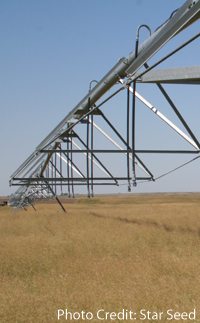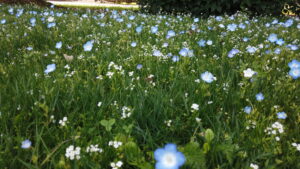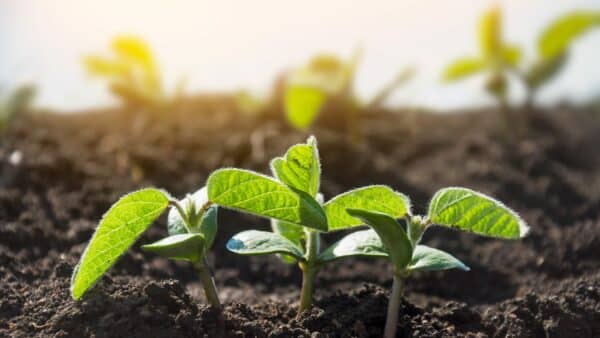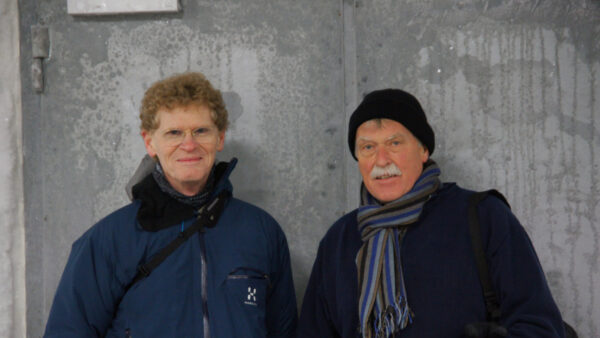A healthy, stable native seed industry is entering the new U.S. fiscal year, but the debt crisis and concern over budget cuts to conservation programs have industry leaders watching the 2012 U.S. Federal Budget and Farm Bill more closely than usual.
It’s been a good year for the native seed industry. A general sign-up for the United States Department of Agriculture’s Conservation Reserve Program in 2010 and 2011, steady seed sales and decreasing inventories have had a stabilizing effect on the sector. But as industry leaders move forward with preparations for the new year, some see clouds on the horizon. One thing is clear—there are more questions than answers about the direction the sector could take in 2012.
“The CRP sign-up was, and is, a boost to the native seed industry—it was a pleasant surprise. We saw a lot of planting during the fall of 2010, as well as the spring and fall of 2011. We’re looking at additional plantings in the fall of 2012. It’s helped consume some inventories, and that needed to happen,” says Mark Mustoe, co-owner and manager of Clearwater Seed in Spokane, Wash. “Last year, there seemed to be no bottom to prices, but now we are in a stabilizing mode.”
Government Spending
However, Mustoe is concerned this stability could be short-lived. This fall, he’ll be watching the 2012 U.S. federal budget closely. “If agriculture takes a huge budgetary hit, there’s no question that it’s going to affect conservation programs. Much of the native seed industry in the United States, whether it is the CRP or Bureau of Land Management, somehow relates back to federal or state government. I think everyone is being cautious at best, looking at their business models, and trying to figure out how to diversify what we grow and what we do.” But the degree to which the deficit crisis and the new budget will affect native seed businesses will not be known until early next year, says Mustoe.
How the CRP is handled in the upcoming 2012 Farm Bill is also an issue Mustoe is following. “If the cap [for enrolled acres] is reduced, the possibility of acres being bid into CRP are gone until we fall under whatever number that cap is, and that could take several years. It’s a long-term deal,” he says.
The growing debate over local ecotype material for reclamation, rehabilitation and restoration projects versus the use of species with broad applications has also left Mustoe with more questions than answers. Government agencies such as the BLM are moving toward the use of local ecotype material, and that’s good or bad depending on who you’re talking to, he says. “In some agencies there are people who think seed for a project needs to be a local ecotype, which is in a radius of so many miles of that site—and there are some who don’t. There’s a tug-of-war going on about what scientifically is [best for the conservation of the environment]. It’s almost more of a belief system than a science.”
For now, given the lack of scientific evidence on the issue, Mustoe says he thinks the use of plant material with broad applications makes common sense. “If we pigeonhole ourselves into this 10-mile radius, I think it dilutes, and hurts, the industry. “You can grow 100 pounds of X, Y or Z, but what do you do when there’s no job there? It’s best for the industry if we look at the bigger picture on a broad landscape.” The debate often causes disagreement, even within agencies, says Mustoe. “One part of the agency is going in a local direction and the other follows a broader application. It’s a hard thing to know what to do.”
Tom Lutgen, president of Star Seed Inc., located in Osborne, Kan., has also had a good year. Generally, he says, there was good movement in the sector, so sales were brisk. “The industry doesn’t have a lot of carryover stock, which is healthy for the industry—to start the new year fresh.”
In the short term, sales won’t be slowing down in his home state of Kansas. Lutgen’s anticipating more interest in and demand for native grasses and herbaceous plants after the announcement of the latest project area for the USDA’s seventh Biomass Crop Assistance Program, which provides incentives to landowners to establish and cultivate biomass crops for heat, power, bio-based products and biofuels.
He also speculates that there could be a boost to the sector from conservation programs aimed at reducing soil erosion along, and sediment in, waterways. “They’ve built some programs specifically for those areas that are hard to farm because they flood frequently,” he says. Recently, the enrollment cap was expanded and incentives increased to the Upper Arkansas River Conservation Reserve Enhancement Program.
Despite these increases to government programs, Lutgen is concerned about future budget cuts and whether or not funding will be slashed for conservation programs. But overall, he says, agriculture is a good place to be right now. “The agricultural base of the economy is still pretty strong in all segments. Farmland prices are still rising, and agriculture, in general, has been very healthy. The farmers are doing well, and that affects everybody.”
The high price of commodities may be good for farmers, but increased competition for land from high-priced commodities is affecting the profitability of the native seed sector. “The high price of commodities affects what we pay our growers to grow seed. We have got to compete with wheat, corn and soybeans. This affects all seed markets because there’s only so much land out there,” he says.
When landowners do sign up for conservation programs, businesses are having a tougher time than in the past trying to determine seed needs. “There used to be standard mixes,” says Lutgen, “Now it’s almost prescription mixes for each farmer. It’s a little more challenging to figure out what the demand is going to be because you may know the acres, but you don’t know the ingredients, and the precise ingredients depend upon the area it’s in.”
Fierce Competition
Like other seedsmen, Kyle Thompson, owner of Prairie Land Management Inc. of Glenwood, Minn., admits the native seed industry is not for the faint of heart. The last few years have really tested his mettle—and he’s not talking about the volatile nature of the business, funding cuts, or even competition from other native seed companies.
He says increased competition for seed sales and planting services from non-profit organizations and his local Soil and Water Conservation District office has crippled his business. Thompson, previously employed by the USDA’s Natural Resources Conservation Service, Farm Service Agency, SWCD, and other government agencies, started PLM in 1994. By 2001, his company, which grows and sells seed, and plans, prepares, plants and maintains land for conservation and habitat development, employed 54 people, and was planting over 10,000 acres of native grass species each year.
Thompson says that same year his local SWCD office acquired native grass drills and started selling seed. “Each year, up until 2001, in our own county we were providing 1,100 to 1,200 acres of native grass plantings and seed sales. In 2001, we had 86 acres and the county had over 2,000 … By 2004, we had 12.5 acres, and the county had 1,900. It literally took 90 to 95 percent of our revenue away. It crippled us.”
Thompson says since then the word has spread to other SWCD offices that selling native seed and planting native grasses can be a lucrative venture. “Other surrounding SWCD offices saw the opportunity to make money, so they got drills and started selling seed,” he says.
But Thompson maintains the SWCD, a government agency, and non-pro
fit organizations have an unfair advantage over privately-owned companies, and he says he wants a level playing field. He says landowners are solicited by the employees of local SWCD offices and non-profit organizations for native seed sales and planting services when they sign up for CRP programs, because all offices are located in the same center. “People have to come in and sign up for the [CRP] programs, so they get access to every landowner. They get solicited by these groups. We can’t even put up a flyer … it’s just not a fair playing field.”
For now, Thompson says this issue mainly affects the central United States. But he warns competition with local SWCD offices and non-profit organizations is becoming more widespread. “Now it’s getting worse, and private [native seed] companies are saying, ‘We need to do something about this.’ A lot of them have gone out of business because they couldn’t take it any longer. They just didn’t want to fight it,” he says.
Despite the increased competition, Thompson, like other seedsmen, is optimistic about the future of his sector. “I think there’s plenty of work out there to be done,” he says. “We fluctuate like any business, with trends going up and down. We will downsize a little if we need to, and if opportunity comes along, we will increase equipment and staff. There are still plenty of opportunities.” Kari Belanger













